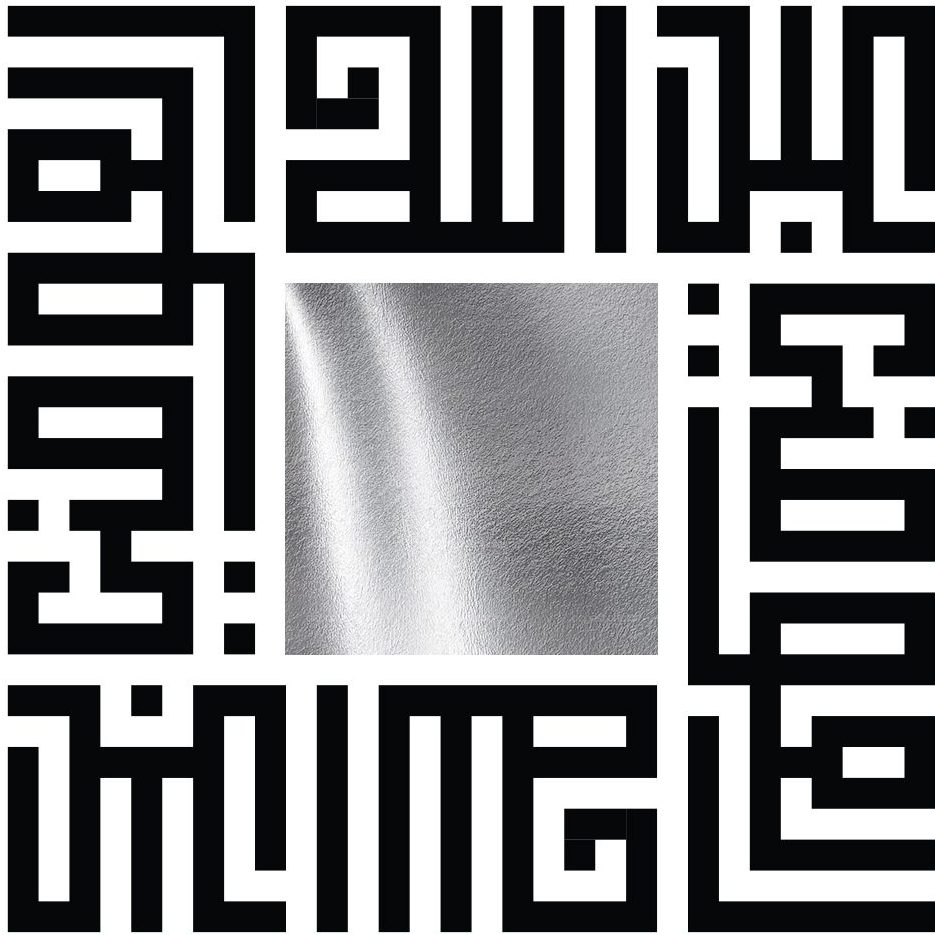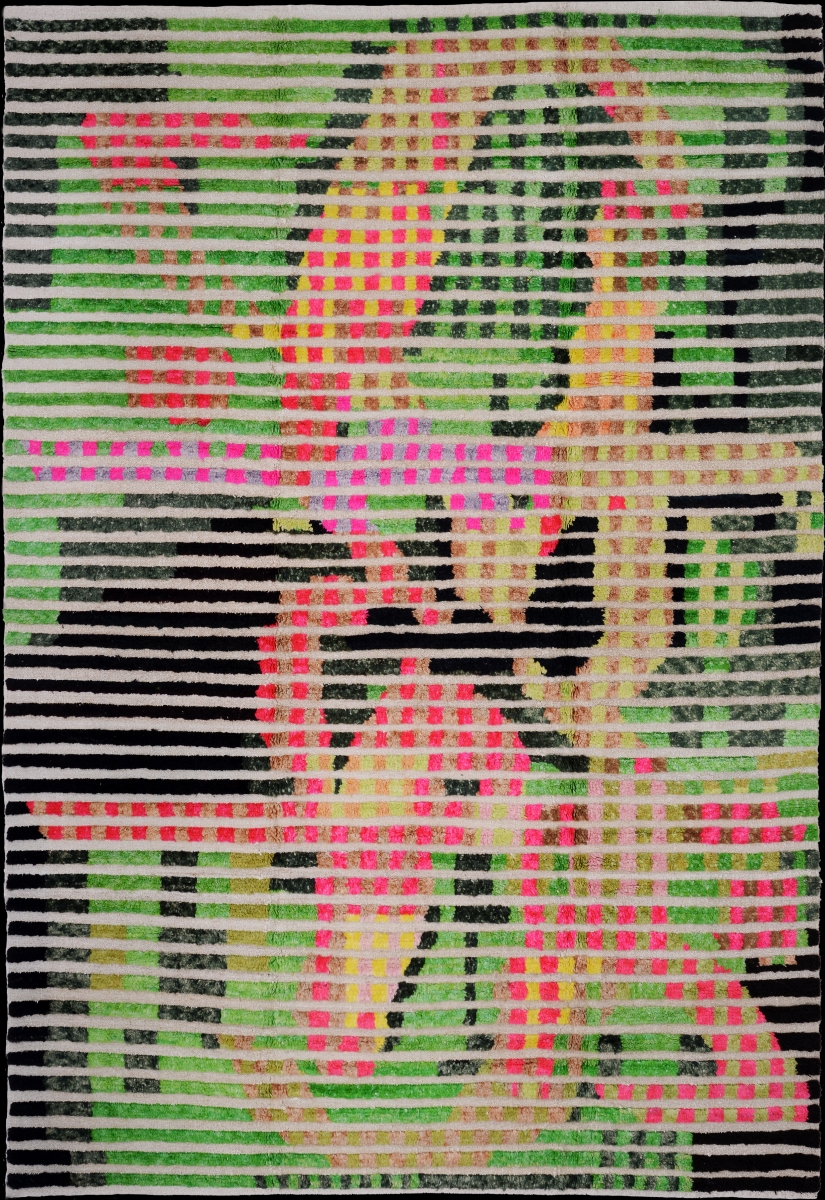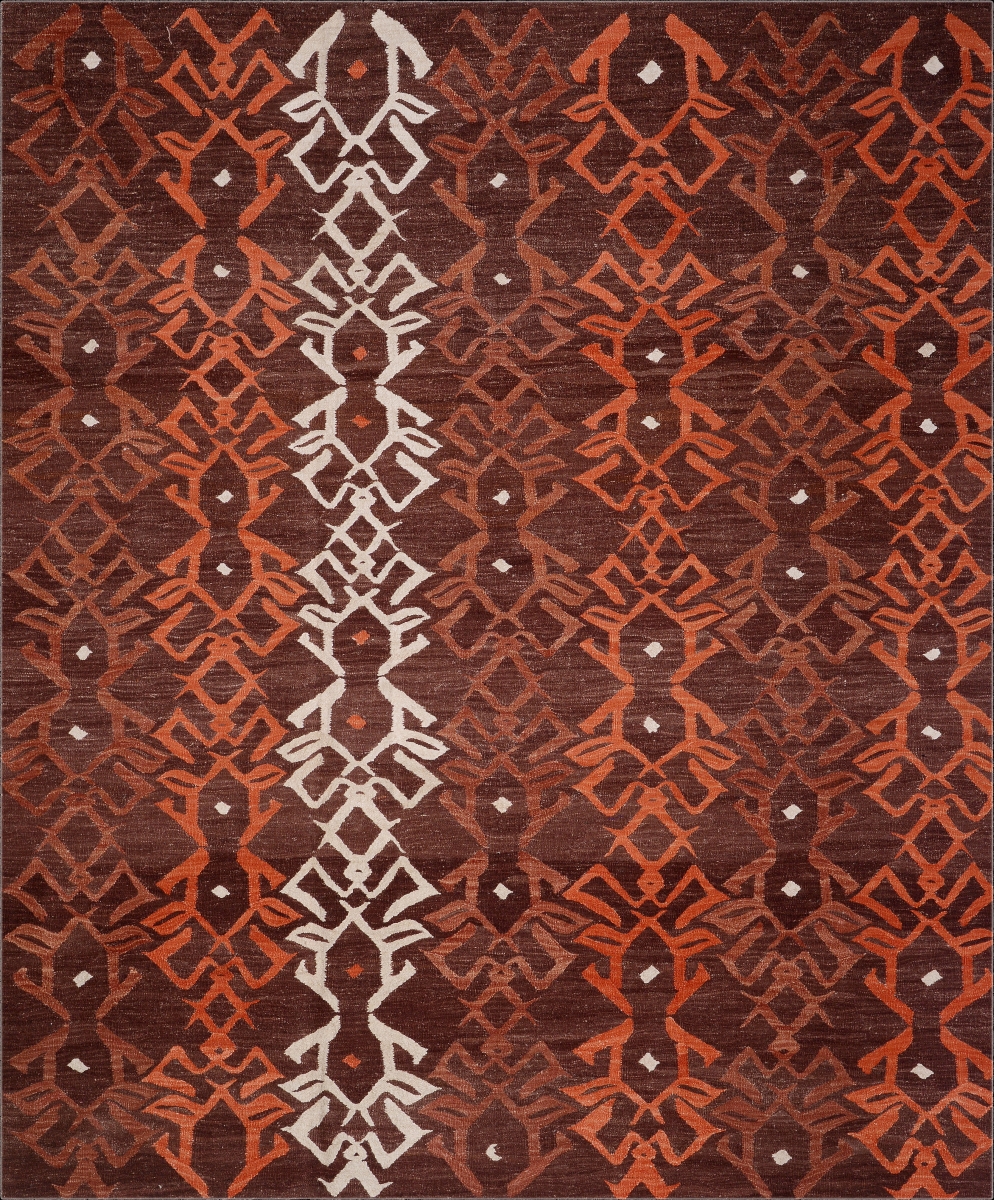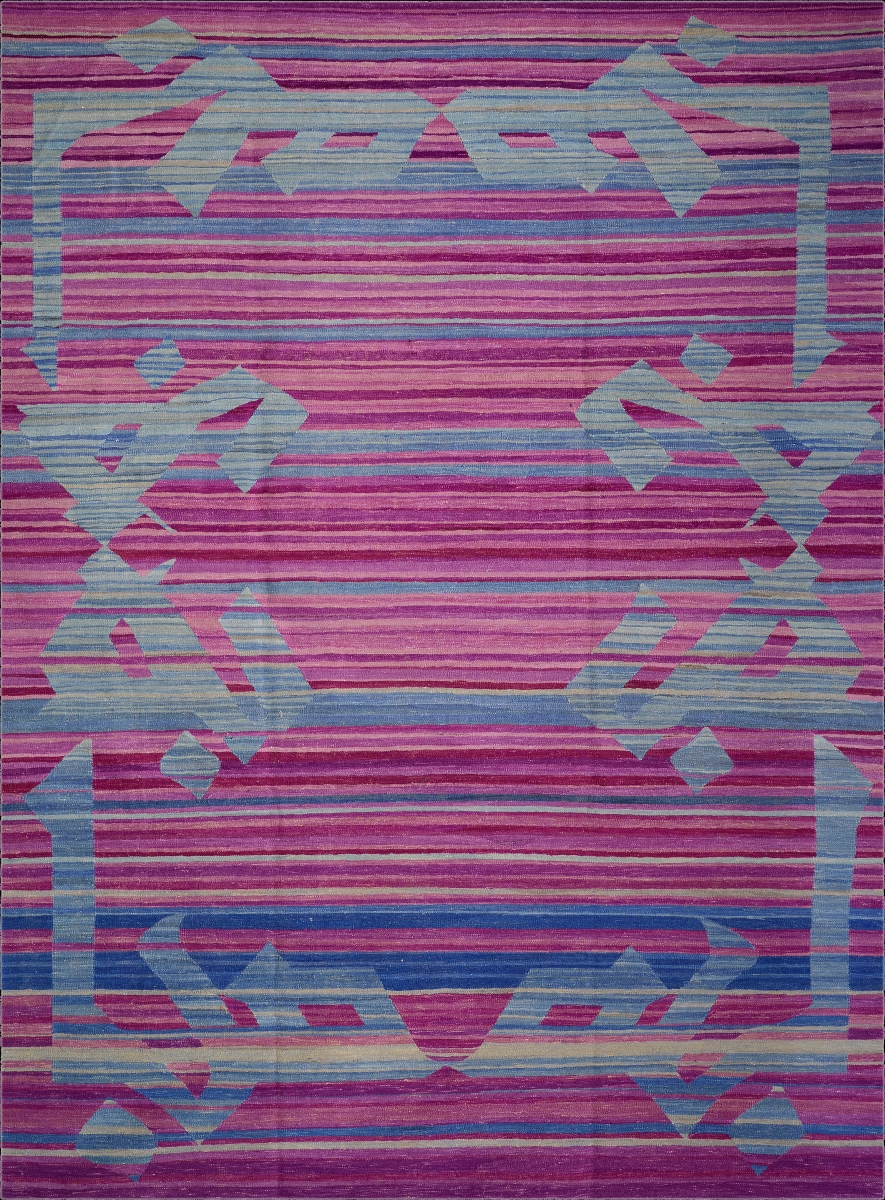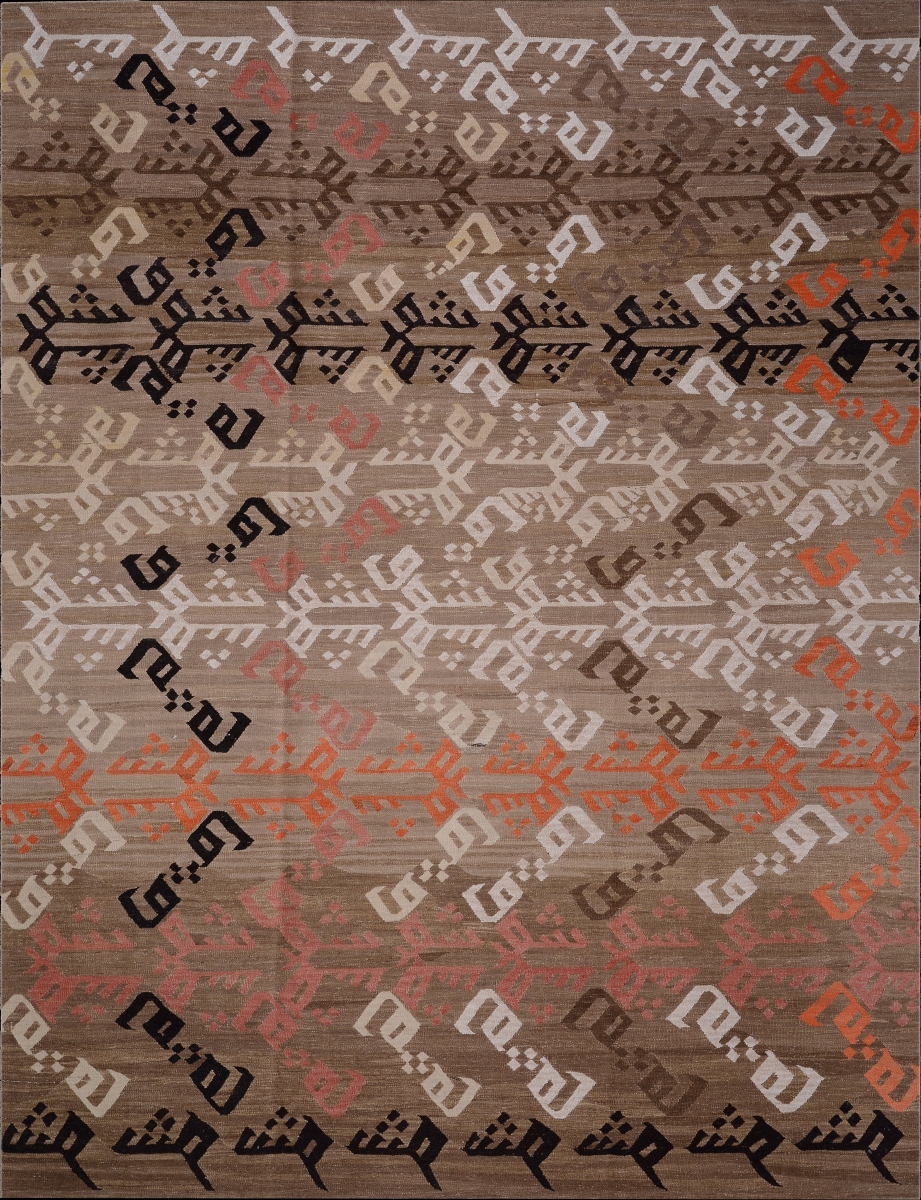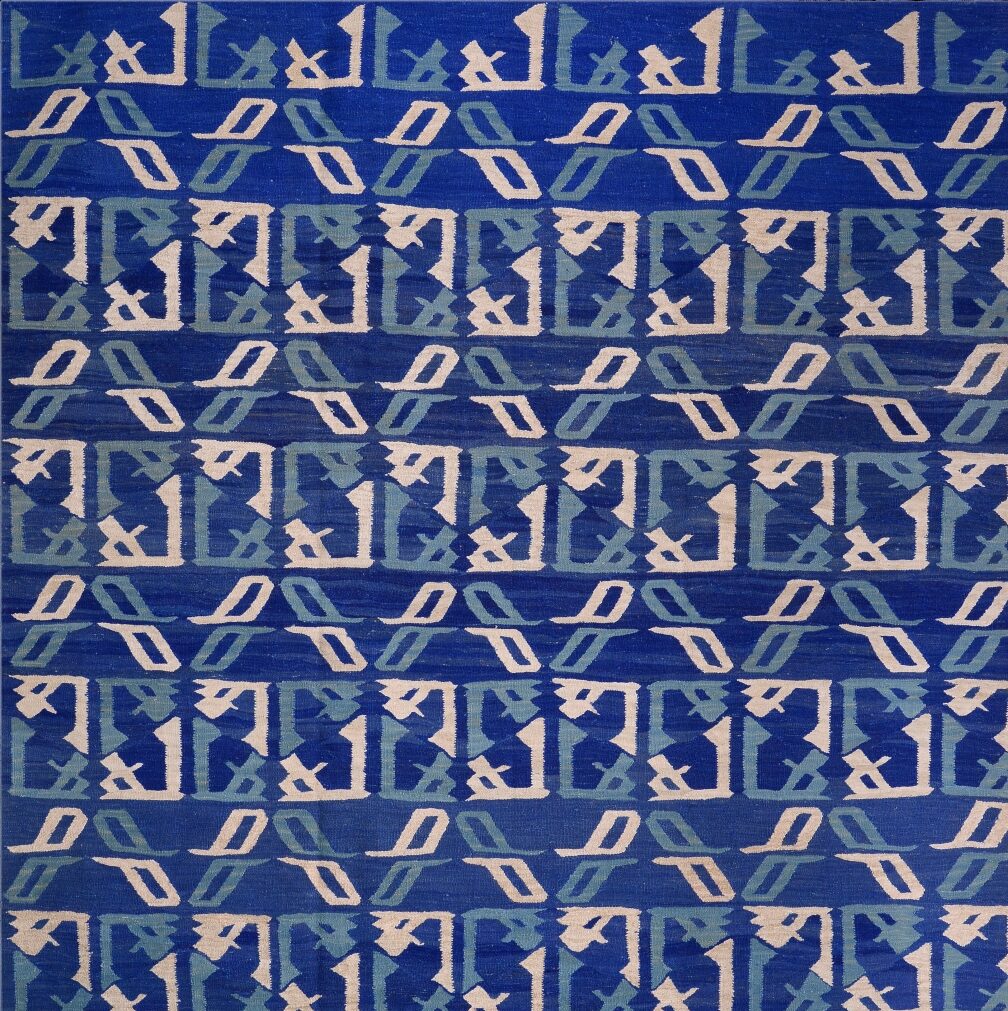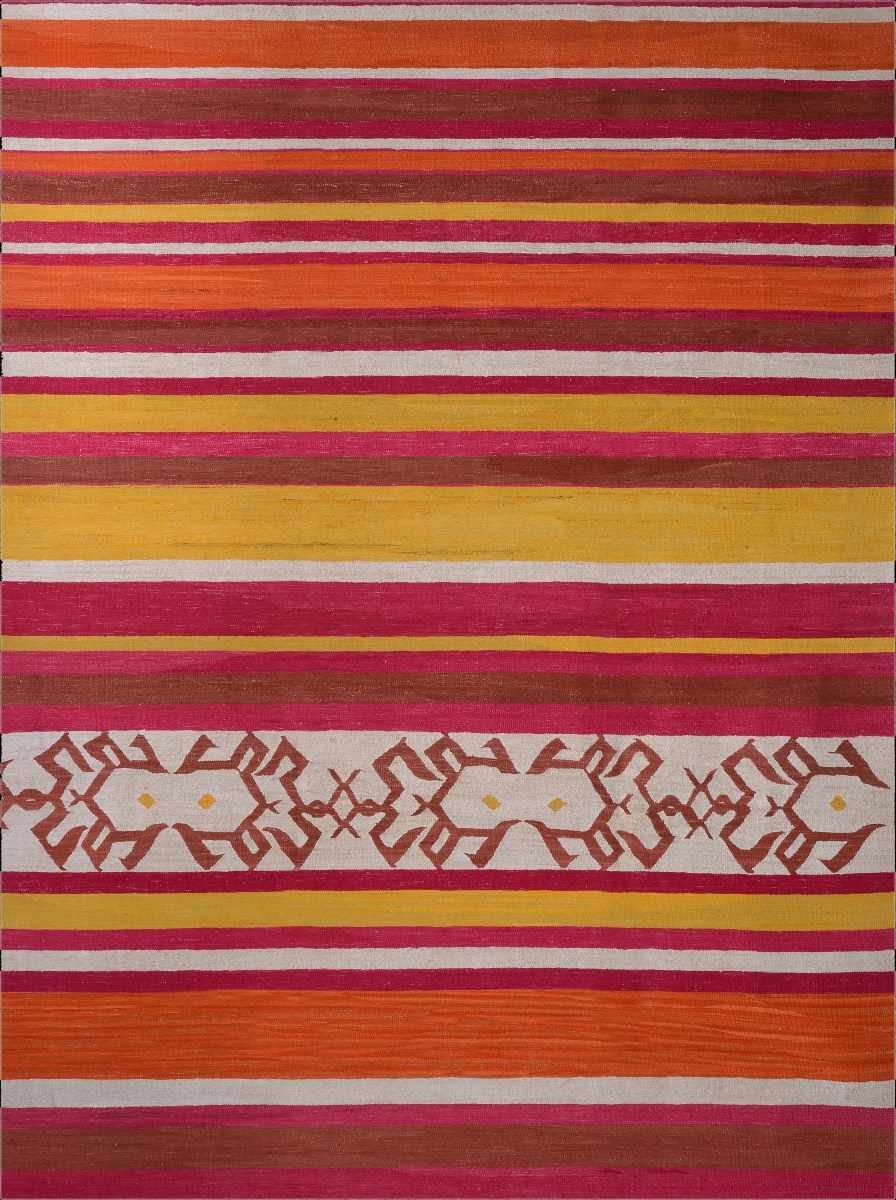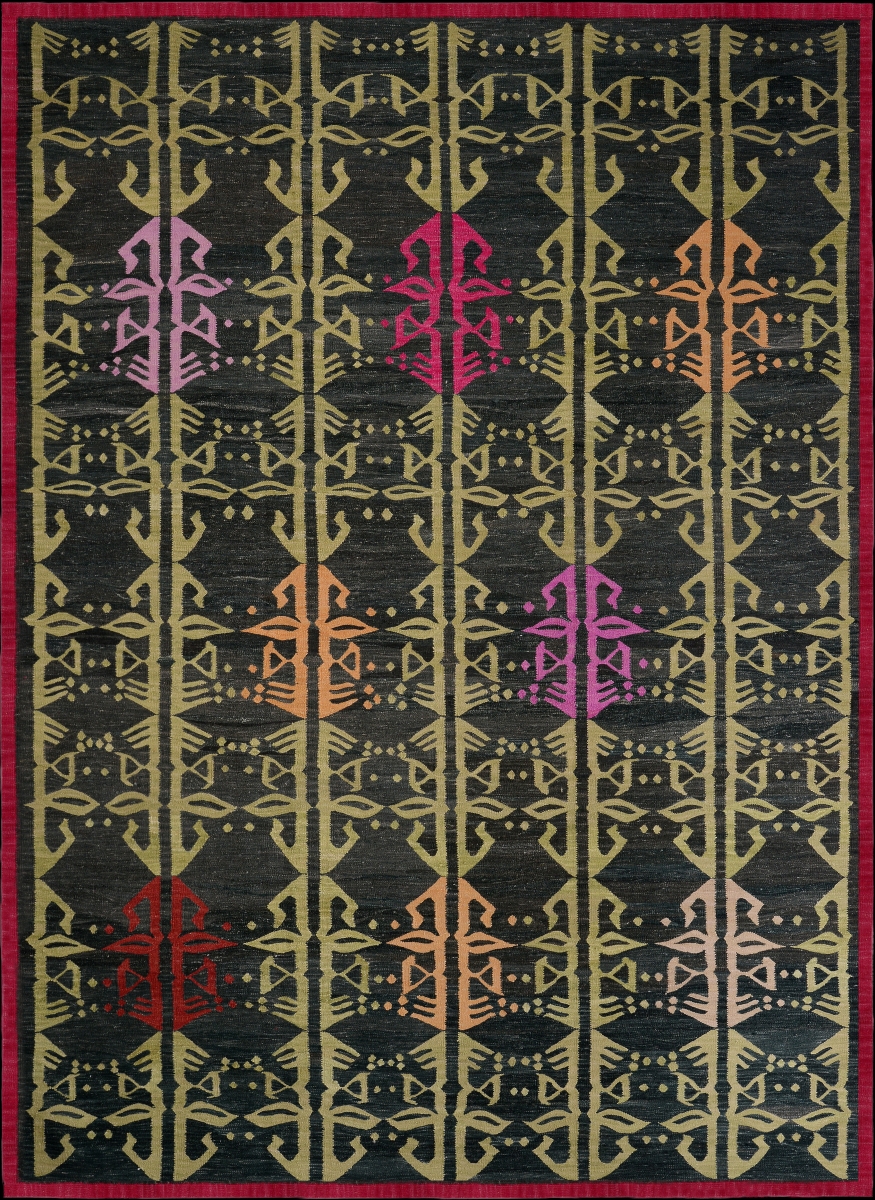SHOUQ
A carpet of love
In most of my design journeys I not only revisit traditional patterns, whether social, artistic or geometric but also regional contemporary crafts, existing, traditional, avant-garde, or on its way to extinction and challenge the thought and design process.
My constant companion in these journeys is the word. My art pieces get their inspiration from a song, a poem, proverb or even an aya from the Quran. In need to have this companion to make sense of my journey and give it its appropriate depth , in this collection the word I am looking at is love or to be more precise the different states of love in the Arabic language
Traditionally when a word appears in an art work it would either hover above an existing composition or get contorted to fit in the present geometry. In this collection the aesthetics appearance of the word initiates the statement and its repetition would generate the overall geometrical pattern of the carpet.
The local tradition of weaving sadu (flat woven carpets) had been part of a nomad’s life for a long time. It was literally the entire living environment starting with the home (tent) all the way to the furniture in it to the riding gear on their mode of transportation (camel or horse). A girl would start to build her house and furnish it from an early stage of her life. This craft has been passed down for generation and took different forms, colors, and style depending on the physical location of the weaver and what is available in their immediate natural surrounding unfortunately this practice is on the verge of extension one of the few remaining traces of this craft is kilims another version of the flat woven carpet and the closest to sadu. Therefore it was an obvious chose for me to seek the help of these weavers to bring my design to life and also use recycled yarn from vintage Anatolian kilims to give my design a stronger link to its predecessor.
The choice for color combination went in two directions: The first direction is to use traditional colors that appear in most sadu and kilims. The limitation of the color pallet is due to the fact that these are the only available dies in the natural environment. The second direction is using colors available to us thanks to modern technology in hand today hence creating a mix that is not connected to a certain physical location but to the creative mind of a chemist.
This carpet utilizes the word shouq (longing) when you long for a person or a place, Although the color pallet is very traditional, the color distribution is highly modern.
التصميم بالنسبة لي هو الارتحال في دروب متقاطعه ، هذه الدروب تحمل في طياتها أسئلة غير تقليدية ، و الوصول الى وجهتي يكمن في البحث عن إجابات او حلول . و الأنماط بحد ذاتها عبارة عن عالم مثير يشمل ما هو تقليدي و سائد اجتماعيا و هندسيا و فنيا و كذلك ما هو في طريقه الى الزوال ، مثل تلك الأنماط التي تواجه تحديات في الأفكار و القابلية في استخدامها في عمليات التصميم كما في موروث حياكة السدو الشعبي
و الموروث البدوي الشعبي عصبه الارتحال و السفر ، تضاد ما بين استمرار الحياة و اللا استقرار ، و من هنا جاءت مهارة ( صنعة ) حياكة السدو ليخلق لحظات الاستقرار في حياتهم و يسجلها . لذي تجد الحائك و المحيوك في جميع تفاصيل الحياة البدوية بدءً من المنزل (الخيمة) وأثاثه وحتى تجهيزات ركوب الدواب حسب وسائل الترحال الخاصة بهم (الجمل أو الخيل).
الفتاة البدوية في دوامة التنقل و الانتقال تسرق لحظات استقرار هينة من حياتها المبكرة لتتجهز لمستقبلها فتحييك منزلها و تعده لتكمل به مسيرة حياتها فيما بعد . لقد توارثت الأجيال هذا الموروث الشعبي الذي أخذ أشكال وألوان ونماذج مختلفة أعتمادًا على الموقع الجغرافي للحائك و المواد و الألوان المتوفرة له في بيئته المحيطة
الكلمة هي رفيقي الدائم طوال رحلاتي . حيث تستمد قطعاتي الفنية الهامها من أغنية٬ قصيدة٬ حكمة أو آية من آيات القرآن الكريم. ولأجعل لرحلتي معني أعمق فانني في حاجة لهذا الرفيق واعطاءه المساحة المناسبة٬ و الحب باختلاف مراحله و معانيه في اللغة العربية هي الفكره التي أتداولها في هذه المجموعة .
عادةً٬ عندما تظهر الكلمة في عمل فني فانها إما ان توضع فوق التركيب الفني الحالي أو يتم تطويعها لتناسب التشكيل الهندسي. أما هنا أصبحت الكلمة هي التركيب الفني وتكرارها خلق التشكيل الهندسي بالكامل.
الخيار للألوان غدا في اتجاهين: الأول استخدام الألوان التقليدية والتي تظهر في معظم صناعة السدو والكليم بسبب توفر مصادرها في البيئة الطبيعية. أما الإتجاه الثاني هو استخدام الالوان العصرية المتوفرة لنا بفضل التكنولوجيا الحديثة حيث خلقت لنا تشكيلة غير مرتبطة بموقع جغرافي بقدر ارتباطها بالذوق الشخصي.
لسوء الحظ أن هذا الموروث على حافة الإنقراض حيث يعتبر الاثر المتبقى منه هو الكليم وهو نمط آخر من أنماط السجاد المنسوج والاقرب الى السدو. لذلك٬ كان من الامثل لي في البداية البحث عن مساعدة رائدي صناعة هذا السجاد و هم النساجون الأتراك لأظهر تصاميمي و اترجمها و اجلبها الى دنيا الواقع
Project Info
- Categories:Patterns
